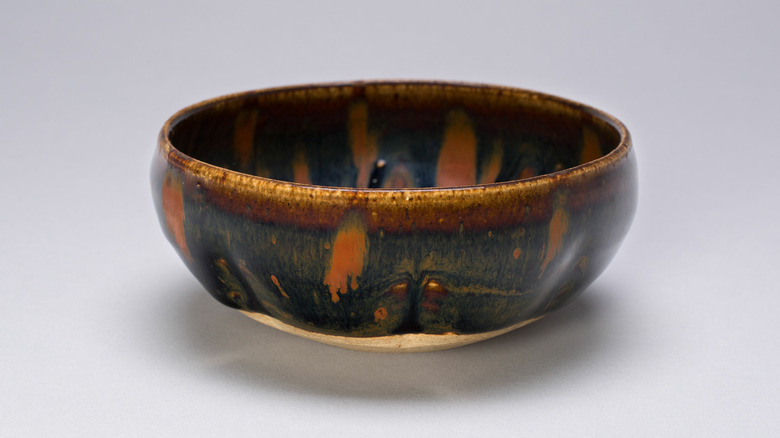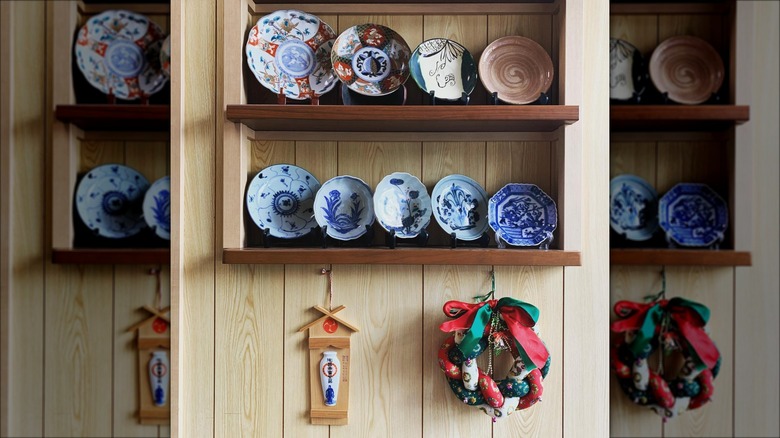The Place You Can Drink Out Of $25,000 Antique Bowls
If you've ever been to New York City's Metropolitan Museum of Art, there's a chance you've been lucky enough to see their collection of Japanese art — or more specifically, their collection of Japanese stoneware and ceramics. Many of these pieces date back hundreds of years, and while aesthetically exquisite and captivating, were used by their former owners in almost astonishingly ordinary ways.
Take, for instance, the bowls, jars, and vases used for chanoyu, the Japanese term for the cultural ancient tea ceremony which, according to the Met's website, is "a ritualized, secular practice in which tea is consumed in a specialized space with codified procedures" and is still very much an integral part of Japanese culture today. In fact, many contemporary tea houses in Japan welcome tourists to experience it for themselves.
This is the case for Gallery Okubo, a long-running tea house in the Yanaka district of Tokyo that's run by Atsuko Okubo and her father (via CNN). Unlike some of their fellow tea house proprietors, however, the Okubo family is also the owner of a coveted collection of antique vessels valued at upwards of $25,000. The best part? Visitors can actually drink out of them.
Tokyo's Gallery Okubo combines new and old
When you walk into Gallery Okubo, you're met with a selected array of bowls, cups, and plates (pictured above) — some of which are over three centuries old, according to a 2022 write-up of the antique gallery-turned-tea house published by CNN. These, however, are just a teaser: The bowls you can actually drink out of are up the stairs in the tatami room, where the ceremony is held. Just imagine holding a vessel that could have been used by the contemporaries of the Japanese masters who started the tradition — all for only ¥1,100 a pop (about $8 USD), per the tea house's website.
The tea ceremony itself finds its roots in Zen Buddhism (via Britannica). Translated to "way of tea," it seeks, in part, to both celebrate the beauty of everyday life and give visitors a warm welcome. The intentionally sparse tatami room, which guests enter through a small door "designed to suggest humility," might contain a hanging scroll and flower arrangement, as well as a sunken fireplace.
Some of the bowls at Gallery Okubo are newer, while others have been around since ancient times. According to Atsuko Okubo, the daughter of Gallery Okubo's owner Mitsuru Okubo, this juxtaposition of new and old "is exactly what makes [Gallery Okubo] special." One way Atsuko and her antiques-dealer father Mitsuru identify the more modern pieces from the older ones is by their imperfections. "Perfect is for robots," Mitsuru told CNN.

